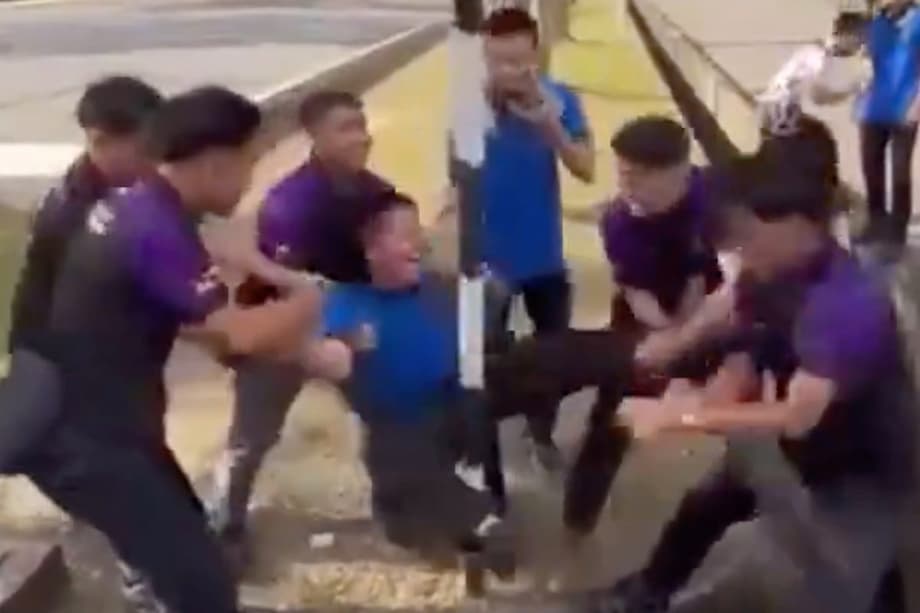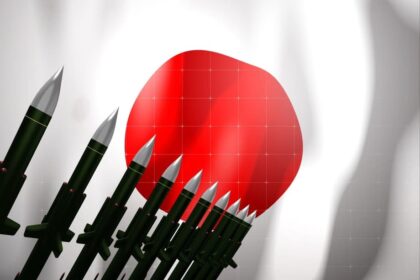A viral video forces a hard line on campus bullying
A brief video clip has jolted Malaysia’s conversation about bullying into sharper focus. In just 13 seconds, a trainee at the National Youth Skills Institute in Miri, Sarawak, is seen being hoisted by several peers and thrust groin first into a fixed pole while others laugh. The practice, known locally as Happy Corner and in Taiwan as aluba, is a ritual that many view as a prank. Authorities did not treat it that way. The institute’s disciplinary board suspended the students involved, froze their allowances, ordered community charity work, and revoked weekend leave for residential students. Those involved, including the student who was targeted, must attend counselling. Youth and Sports Minister Hannah Yeoh, whose ministry oversees the IKBN network of training institutes, said police officers will hold anti bullying talks on campus and provide a complaints box to make it easier for students to report harassment and intimidation.
- A viral video forces a hard line on campus bullying
- What exactly is Happy Corner and how did it spread?
- How the institute responded and what it signals
- Where is the line between prank and crime?
- Why social media made this case impossible to ignore
- Does Malaysia have a wider bullying problem?
- Inside the Miri sanctions: what each measure tries to achieve
- Prevention that works: steps for schools, parents, and students
- Regional lessons from East Asia’s experience
- What accountability should look like in the weeks ahead
- At a Glance
Happy Corner has long been criticized in parts of East Asia as a form of sexualized hazing. It typically involves a group overpowering a boy, lifting his limbs, and forcing his pelvis against a tree, goalpost, or similar vertical object. Even where intent is framed as humour or tradition, the act removes a person’s control over their body in public, and it can cause physical injuries that range from bruising to serious trauma. The Miri video became a lightning rod because it captured that loss of control so starkly, with the student’s shoe flying off on impact.
What exactly is Happy Corner and how did it spread?
Happy Corner took root in schoolboy culture in mainland China during the 1980s, then appeared in Hong Kong, Macau, and Taiwan where it became known as aluba. Alumni anecdotes and online forums often describe it as part of birthdays, initiation rituals, or boarding school horseplay. The behaviour traveled through student networks, meme culture, and video platforms. It has surfaced intermittently outside of greater China, usually wherever students share dormitory life, sports teams, or tight peer groups that treat it as a rite of passage.
How it is usually carried out
The pattern tends to be similar. Several boys grab an unsuspecting target, lift him by arms and legs, and push his groin into a vertical object. The group dynamic is the point. The prank relies on surprise, an audience, and the social pressure that keeps bystanders laughing rather than intervening. Phones now add a recording layer that amplifies humiliation, since clips can circulate widely within minutes.
Why it is harmful
Medical risks are not trivial. A forceful strike to the pelvis or genitals can cause contusions, torsion, or long term pain. Psychological harm is equally real. Being restrained and violated in front of peers can leave shame, anger, or anxiety that lingers. When a school culture labels this as harmless fun, it normalizes coercion and erodes the idea of consent. What starts as a dare can become a cycle in which yesterday’s target becomes tomorrow’s perpetrator, spreading a culture of dominance.
How the institute responded and what it signals
The Miri campus moved quickly. The Student Disciplinary Board Committee unanimously opted for a package of penalties and corrective measures. Students seen participating were suspended, their allowances were frozen, and they were assigned charity work. Weekend leave was withdrawn for residential students to reassert order and oversight. Counselling is mandated for those involved, including the student who was targeted, to address harm, accountability, and reintegration into campus life. Police engagement is part of the plan, with officers scheduled to give briefings on bullying, harassment, and reporting channels, and to maintain a complaints box on site.
Administratively, the institute is blending punitive steps with education and support. That combination matters. Penalties frame the conduct as unacceptable. Counselling helps change thinking patterns, confront peer pressure, and redirect group dynamics. Police presence and a simple, anonymous reporting option give students a way to escalate concerns without fear of reprisal. The swift response also signals to parents and employers that vocational campuses are not blind to bullying risks and that leadership is responsible for the climate students live in.
Where is the line between prank and crime?
Malaysian law recognizes a spectrum of offences that may apply when someone is restrained and hurt against their will. If physical pain or injury is caused, it can fall under voluntarily causing hurt (Section 323 of the Penal Code). If the incident involves assault or criminal force with intent to outrage modesty, Section 354 may be relevant. The context matters: the level of force, the presence of restraint, intent, and whether the act was sexualized. Recording and sharing humiliating clips can also run afoul of the Communications and Multimedia Act 1998, which prohibits improper use of network facilities to cause distress or annoyance. Campus rules typically add a separate layer of sanctions for hazing and bullying.
Consent is central. A joke that depends on surprise and physical restraint is rarely consensual. Even if a target laughs along after the fact, consent under pressure is not meaningful. Schools should not weigh harm only by medical outcomes. The loss of bodily autonomy and the coercive crowd environment are serious in their own right.
Why social media made this case impossible to ignore
Viral visibility altered the timeline. Without a clip, an incident like this might be handled quietly inside a dorm or club. With a clip, hundreds of thousands of viewers become instant witnesses. That public audience increases pressure on administrators to act and reduces the chance that a victim will be talked out of reporting. Social networks can also spread copycat behaviour, which is why rapid messaging from authorities helps reset norms. Clear statements that name the act, explain why it is harmful, and spell out consequences help dry up the laughs that such videos chase.
The video also highlights bystander effects. People often freeze when others are laughing, or they assume someone else will step in. Training students to interrupt early, even with simple actions like saying “stop” or starting to film the interveners rather than the victim, can break the script. Campus leaders can reward bystander intervention, not just punish misconduct, to shift the attention economy away from humiliation.
Does Malaysia have a wider bullying problem?
Bullying and hazing have troubled Malaysian educational settings for years, from secondary schools to universities and military colleges. High profile deaths and injuries linked to ragging have spurred periodic crackdowns and campaigns, and many campuses have refreshed codes of conduct in response. Surveys of students show that humiliation, intimidation, and coercive “initiations” remain a stubborn minority behaviour that flares most in male peer groups that mistake dominance for bonding. Rights groups have also documented that marginalized students, including gender nonconforming youth, face elevated risks of harassment and exclusion, which compounds the harm of any single episode.
Policy responses have improved reporting channels and discipline procedures. Schools and institutes now use hotlines, discipline portals, and liaison officers to make it easier to report bullying. Some roll out prevention modules during orientation and student leadership training. The challenge is consistency. Rules on paper do not change conduct unless adults model them, consequences are predictable, and students learn concrete ways to support peers under pressure.
Inside the Miri sanctions: what each measure tries to achieve
Freezing allowances aims to attach a direct financial cost to misconduct, which is tangible for trainees who rely on stipends for living expenses. Suspension removes those most responsible from the environment, creating breathing room for the community to reset expectations. Charity work can reinforce accountability by requiring time and effort that benefits others. Revoking weekend leave allows closer supervision for a period, which can deter retaliation or copycat acts while counselling takes place. Counselling itself is crucial. It should cover consent, the difference between humour and harm, and the psychology of crowd behaviour. For the student who was targeted, counselling offers a space to process shock, anger, or embarrassment and to plan a safe return to routine.
The police briefings and the complaints box are about trust and access. Students sometimes assume reporting will make things worse. A simple, visible channel that bypasses peer gatekeeping, combined with clear assurances of confidentiality, lowers that barrier. Regular visits from law enforcement underscore that bullying is not a private rite, it is a community safety issue.
Prevention that works: steps for schools, parents, and students
Preventing the next incident requires more than reacting to videos. Evidence from campuses that reduce hazing points to several practical steps. First, leaders must state, plainly and often, that any act that strips a person’s control over their body is unacceptable. Second, rules should be short, specific, and enforced with predictable consequences. Third, orientation should include realistic scenarios that teach students how to refuse, how to help a peer exit a risky situation, and how to report without social fallout.
What administrators can implement now
– Map high risk spaces and times, such as late nights in dorm commons and sports locker rooms, then increase adult presence during those windows. – Highlight a few student leaders who commit publicly to safe traditions and positive team rituals. – Offer amnesty for bystanders who report, so students feel safe stepping forward even if they were present at a rule breach. – Track incidents centrally so patterns across teams or dorms are visible to leadership. – Pair discipline with restorative practices where appropriate, so those who caused harm hear its impact and complete concrete steps to repair trust.
What families can watch for
Parents can ask open questions about team or dorm culture, not just grades. Watch for sudden reluctance to attend practice or training, unexplained bruises, withdrawn behavior, or jokes that normalize humiliation. Encourage teens to set boundaries with friends and to leave group chats where abusive dares circulate. Remind them that walking away from a “prank” is a form of strength, not weakness.
Regional lessons from East Asia’s experience
Schools in Hong Kong, Taiwan, and mainland China have confronted aluba cycles for years. The most effective responses were straightforward: explicit bans written into student handbooks, early term assemblies that made examples of prohibited conduct, and team coaches who replaced hazing with positive bonding traditions. Some campuses staged role play drills that trained students to de escalate group pile ons, while others rewarded teams that built inclusive initiations that did not rely on humiliation. None of these steps required new laws. They required adult attention, clarity, and follow through across semesters.
Malaysia’s institutes can draw from the same playbook. The Miri case shows that rapid, transparent action can set the tone for a whole network of campuses. When students see that leadership will act on a short clip, they also see that leadership will listen. That is the kind of credibility prevention depends on.
What accountability should look like in the weeks ahead
Investigations should be thorough but timely, with clear communication to the campus about outcomes that do not reveal private details. Counselling sessions should be scheduled, attended, and evaluated for effectiveness. The complaints box and police briefings should not be symbolic. They should be part of a regular rhythm of engagement. Staff should check in with the student who was targeted and ensure there are no reprisals. Peer mentors can accompany those returning from suspension to support a clean restart while maintaining firm expectations.
If campuses sustain this tempo, incidents like Happy Corner will lose their social fuel. Each time a crowd chooses to intervene rather than laugh, the ritual loses status. That is how a harmful tradition becomes a relic.
At a Glance
- A viral 13 second clip from IKBN Miri showed a trainee subjected to a Happy Corner hazing ritual.
- The institute suspended those involved, froze student allowances, revoked weekend leave, and assigned charity work.
- Counselling is mandatory for those involved, including the student who was targeted.
- The Youth and Sports Ministry said police will deliver anti bullying talks and install a campus complaints box.
- Happy Corner, also called aluba, began in East Asia and has long been condemned as coercive and harmful.
- Legal experts note potential offences include voluntarily causing hurt and, in some contexts, outraging modesty.
- Social media visibility accelerated action and highlighted the need for bystander intervention training.
- Effective prevention blends clear rules, consistent enforcement, student training, and easy reporting channels.












